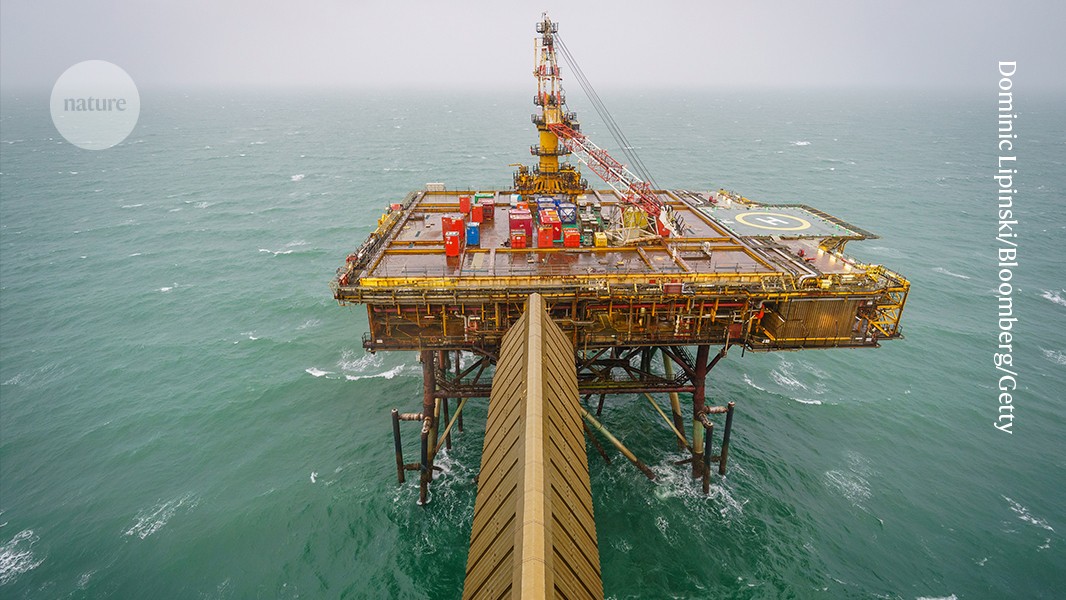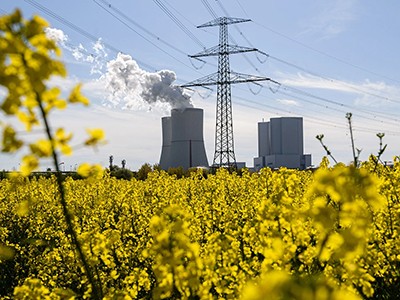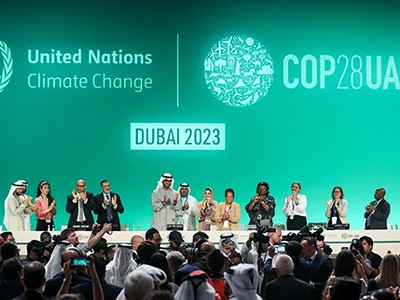Carbon-capture technology, such as this plant in the Irish Sea, is at the research, development and demonstration stage.Credit: Dominic Lipinski/Bloomberg/Getty
Last week, the European Commission published its long-awaited recommendations for climate targets for 2040. The commission, which is the executive arm of the European Union, is recommending that EU member states cut greenhouse-gas emissions by 90% by 2040, compared with 1990 levels. If countries agree, this would be an interim milestone, ahead of the European Climate Law, which sets out a legally binding target for net-zero emissions by 2050.
A target cut of 90% is not as ambitious as some headlines suggest. The EU’s existing policies could reduce emissions by 88% by 2040, according to its own projections. This would be achieved mainly through phasing out coal, converting most fossil-fuel power to renewable sources such as solar, wind and tidal energy, and electrifying transport. There will still be emissions from some vehicles on the road, from shipping and from aviation. Some oil and gas power will also be in use. The commission is, therefore, proposing to accelerate technologies, such as carbon capture and storage (CCS), that can take up some of those remaining emissions and store the gases, possibly underground.
EU unveils controversial climate target: what scientists think
The 2040 interim target was proposed by independent climate-science advisers to the EU, and it’s good to see their proposal being implemented. But the advisers also cautioned that getting to 90% by including CCS technologies will be challenging. The biggest obstacle is that the technology is not ready — a point reiterated by climate scientists who Nature spoke to in our news reporting of the announcement. At present, there is not a single fully operational CCS plant in Europe, nor a system for governing and regulating the technology. So far, ten CCS projects are planned in the EU, according to the commission’s science advisers. Assuming they all function, their combined carbon-capture capacity is expected to be less than the expected contribution from CCS to achieve the EU’s 2040 climate target.
It is worth quoting the science advisers’ views on the risks versus the benefits of emphasizing CCS: “This presents a dilemma for policymakers who need to find ways to incentivise sustainable carbon removal scale-up, while avoiding the risk of disincentivising greenhouse-gas emission reductions in different sectors by more conventional means and a suitable governance system.” Emissions reductions “by more conventional means” includes efforts to cease the burning of fossil fuels; the advisers are keen to ensure that these are not sidelined by policymakers.
The interim climate target will now be discussed by member states, and could face some opposition. European countries have historically set more-ambitious climate targets than other high-income countries, but some of the bloc’s largest nations, such as France and Germany, are now facing pressure to weaken climate commitments, or are actually reneging on climate pledges — as the United Kingdom is also doing. This pressure is coming from many sides, including political parties and specific sectors, such as farmers. People have legitimate fears about the loss of jobs in carbon-heavy industries and over who will pay the costs of converting to electric vehicles or decarbonizing home-heating systems.
COP28 climate summit signals the end of fossil fuels — but is it enough?
In this respect, the commission’s proposal could have been more persuasive. The document advocates for protecting the most vulnerable in the coming energy transition, as well as ensuring that EU industry stays competitive. But it is light on the specifics of how this should happen. There is a body of research on how to achieve an equitable and just climate transition. There are also lessons from other countries, notably the United States, on how at-risk communities should be supported. The European Commission should ask its science advisers to synthesize this knowledge in the same way they have synthesized research on scenarios for the climate target itself.
Much of the current public discussion around climate policies presumes that of the options available, business as usual is a better, or neutral option, against which other choices are necessarily worse. But, as the commission emphasizes, “the costs and human impacts of a changing climate are large and growing”. Delaying action will itself be costly. That must be emphasized with more vigour and urgency over the next few months as the commission seeks to get agreement on its interim targets. It rightly has based its target on the consensus of scientific advice. It should consult its advisers as it begins its period of public engagement. Researchers can help by advising on not just how its targets could be achieved, but also the costs of not doing so.



